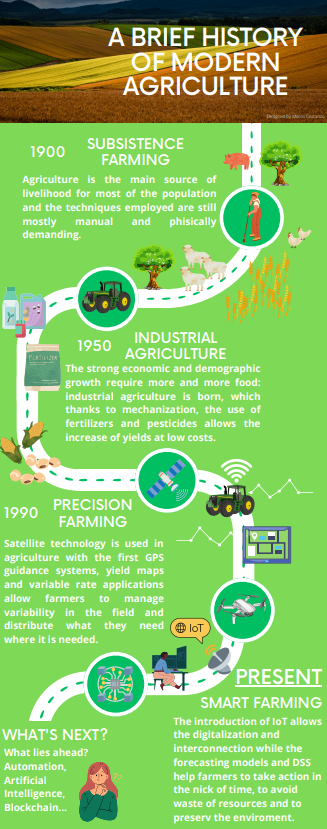Introduction to Precision Agriculture #
The concept of precision agriculture (or precision farming) comes from the realization that the spatial variability distinctive to each field can be measured and managed with site-specific techniques according to the needs of the crop, which by nature are variable in time and space. This information can be gathered and exploited. We live in an era of technological development, and agriculture is undoubtedly affected by it, so much so that each of us has surely heard of precision agriculture. To take advantage and profit from these modern technologies offered by the market, farmers and technicians must know, master, and fully exploit them.
The main benefits consist of the following:
- Reduction in the number of passes and overlaps during tillage resulting in increased hourly productivity while saving diesel fuel and inputs as well as preserving soil structure;
- Ability to operate even in low visibility conditions or at night;
- Significant improvement in operator welfare standards and reduced stress;
- Targeted application and efficiency of farm resources such as seed, fertilizer, and pesticides through variable rate distribution and section control;
- Timeliness and precision of intervention due to the use of dedicated software to advise the farmer;
- Traceability of operations and product from field to table (consumer);
- Mitigation of environmental impact related to agricultural activities;
Plenty of technologies and applications are used in the precision agriculture ecosystem, from its origins to future prospects.
But first, a helpful short timeline to provide an idea of the state of the art.






